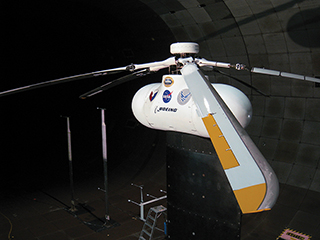
Adaptive control technologies could like this SMART rotor could allow helicopters to travel with greater efficiency and less noise. (NASA.)
Instructor(s)
Prof. Steven Hall
MIT Course Number
16.06
As Taught In
Fall 2012
Level
Undergraduate
Course Description
Course Features
Course Description
This course introduces the design of feedback control systems as applied to a variety of air and spacecraft systems. Topics include the properties and advantages of feedback systems, time-domain and frequency-domain performance measures, stability and degree of stability, the Root locus method, Nyquist criterion, frequency-domain design, and state space methods.


